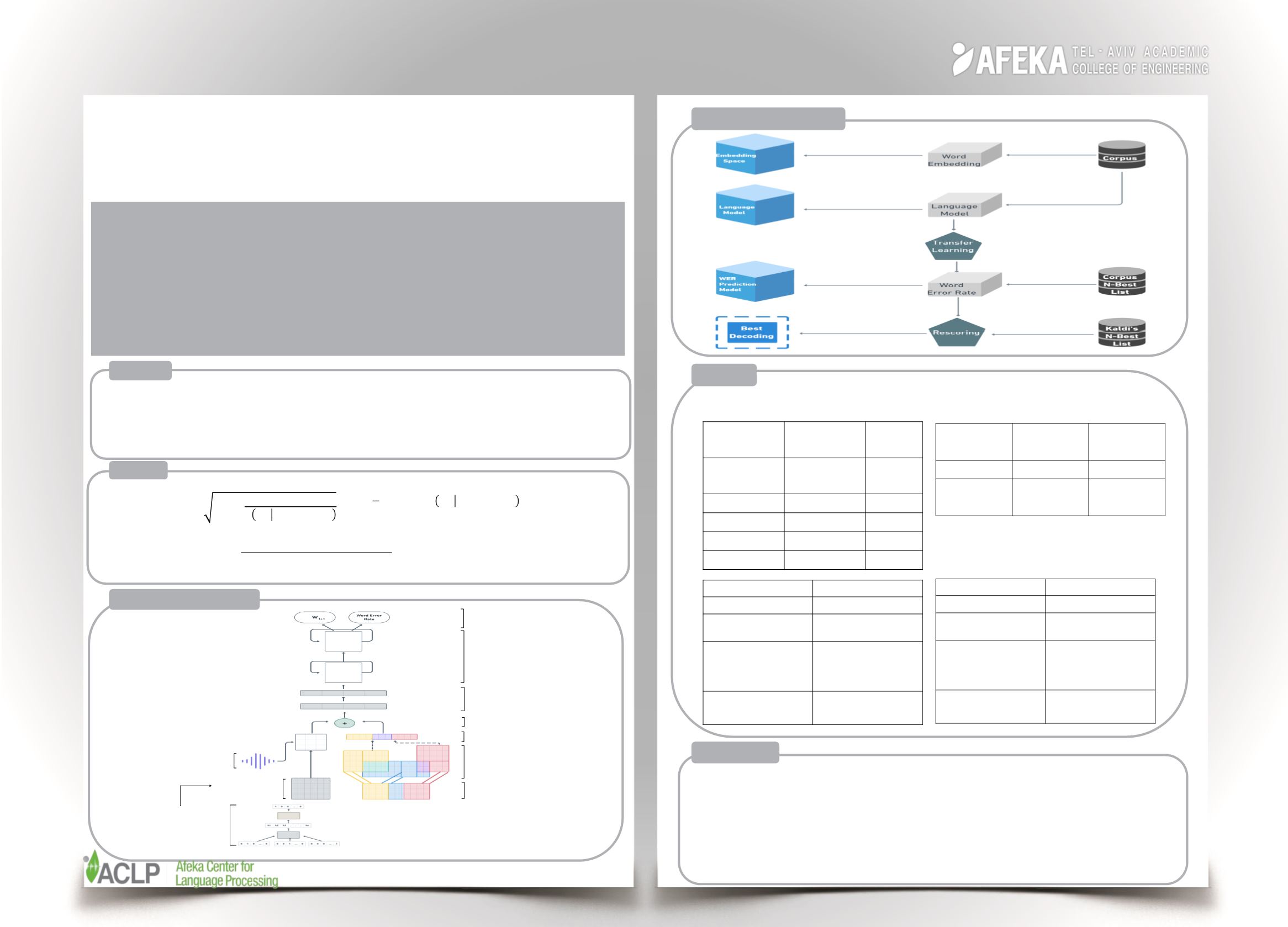

Improving Language Models and Speech
Recognition using Character Aware Deep Learning
Oshri Mahlev – Software Engineering,
Ohad Volk – Industrial Engineering
Advisor: Dr. Gadi Pinkas
Language modeling is a key factor in almost every Natural
Language Processing task, specifically it can be integrated
into Speech Recognition process.
By using character awareness and subword information we
improved language modeling and propose a novel approach
to improve the rescoring process in speech recognition.
I. Improving LM using LSTM and combining Subword Information and Character
___
Awareness techniques.
II. Improving the Speech Recognition rescoring process.
Test -
PPL
Validation -
PPL
Model
76.5
81.5
4-gram LM
RNN
81.6
85.8
C-RNN
76
81
F-RNN
68
54.86
Baseline
64.5
36.45
Our Model
Test - PPL
Validation
- PPL
Model
105
245
Baseline
96
201
Our Model
Test – WER
Model
25.84%
Kaldi’s top 1
28.3%
Our model top 1
24.26%
Best of Kaldi’s
top 1 + Our
model’s top 1
22.57%
Best of Kaldi
top 2
English
Hebrew
Test – WER
Model
13.51%
Kaldi’s top 1
13.98%
Our model top 1
12.29%
Best of Kaldi’s
top 1 + Our
model’s top 1
12.23%
Best of Kaldi
top 2
System Architecture
Results
FastText
Embedding
Character
Embedding
Convolution
Addition
Highway
LSTM
Layers
Max Pooling
Acoustic
Features
Pre-Training
FastText
Output
Network Architecture
Goals
=
=1
1
1
…
−1
= 2
−
1
=1
log
2
1
…
−1
=
+
+
Metrics
Incorporating subword information can improve language model performance,
including morphological rich languages, such as Hebrew.
Rescoring while using WER prediction didn’t improve directly Kaldi’s
performance, but there is an improvement potential by using an ensemble that
will combine the two methods together.
Conclusions
















